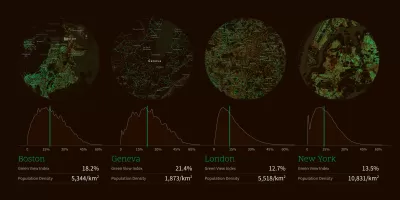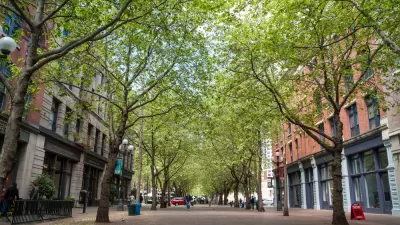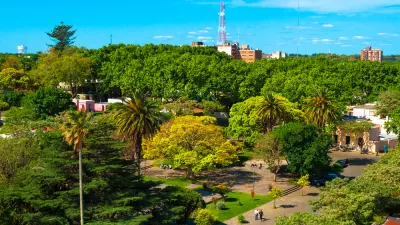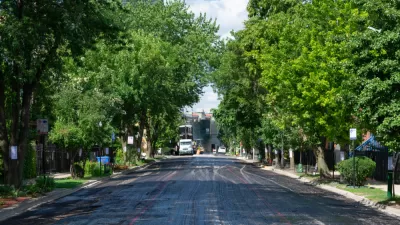Seattle provides plenty of shade for residents to enjoy in the summer months.

Charles Mudede takes a dive into the world of urban tree canopies, comparing Seattle's urban forest to cities around the world and finding that the Pacific Northwest City is pretty green.
According to Treepedia, the density of Seattle's forest is second only to Sacramento's in the US. Vancouver BC, which is up in Canada and the second-largest city in the Pacific Northwest, has a denser forest than Seattle's.
Mudede also cites a 2012 report called "Forest Ecosystem Values: Analysis of the Structure, Function, and Economic Benefits," to place the number of trees in Seattle at 4.35 trees and tree-like shrubs. That's 7 trees and tree-like shrubs for every resident in Seattle. Mudede also explains the loose definition of "tree" (hence all the "tree-like shrubs")—it might come as a surprise to amateur biologists that there "is no hard science to tree-ness."
Treepedia is also worth another look. The project by the MIT Senseable City Lab uses Google Street View data to measure the urban "Green Canopy," or the aboveground portion of trees and vegetation in cities around the world. Planetizen covered the public release of Treepedia at the beginning of 2017.
FULL STORY: Seattle Is the Seventh-Densest City In the World—For Trees

Alabama: Trump Terminates Settlements for Black Communities Harmed By Raw Sewage
Trump deemed the landmark civil rights agreement “illegal DEI and environmental justice policy.”

Planetizen Federal Action Tracker
A weekly monitor of how Trump’s orders and actions are impacting planners and planning in America.

The 120 Year Old Tiny Home Villages That Sheltered San Francisco’s Earthquake Refugees
More than a century ago, San Francisco mobilized to house thousands of residents displaced by the 1906 earthquake. Could their strategy offer a model for the present?

Ken Jennings Launches Transit Web Series
The Jeopardy champ wants you to ride public transit.

BLM To Rescind Public Lands Rule
The change will downgrade conservation, once again putting federal land at risk for mining and other extractive uses.

Indy Neighborhood Group Builds Temporary Multi-Use Path
Community members, aided in part by funding from the city, repurposed a vehicle lane to create a protected bike and pedestrian path for the summer season.
Urban Design for Planners 1: Software Tools
This six-course series explores essential urban design concepts using open source software and equips planners with the tools they need to participate fully in the urban design process.
Planning for Universal Design
Learn the tools for implementing Universal Design in planning regulations.
Clanton & Associates, Inc.
Jessamine County Fiscal Court
Institute for Housing and Urban Development Studies (IHS)
City of Grandview
Harvard GSD Executive Education
Toledo-Lucas County Plan Commissions
Salt Lake City
NYU Wagner Graduate School of Public Service





























